Hit the (HOME) Gym | Building A Personal Workout Space
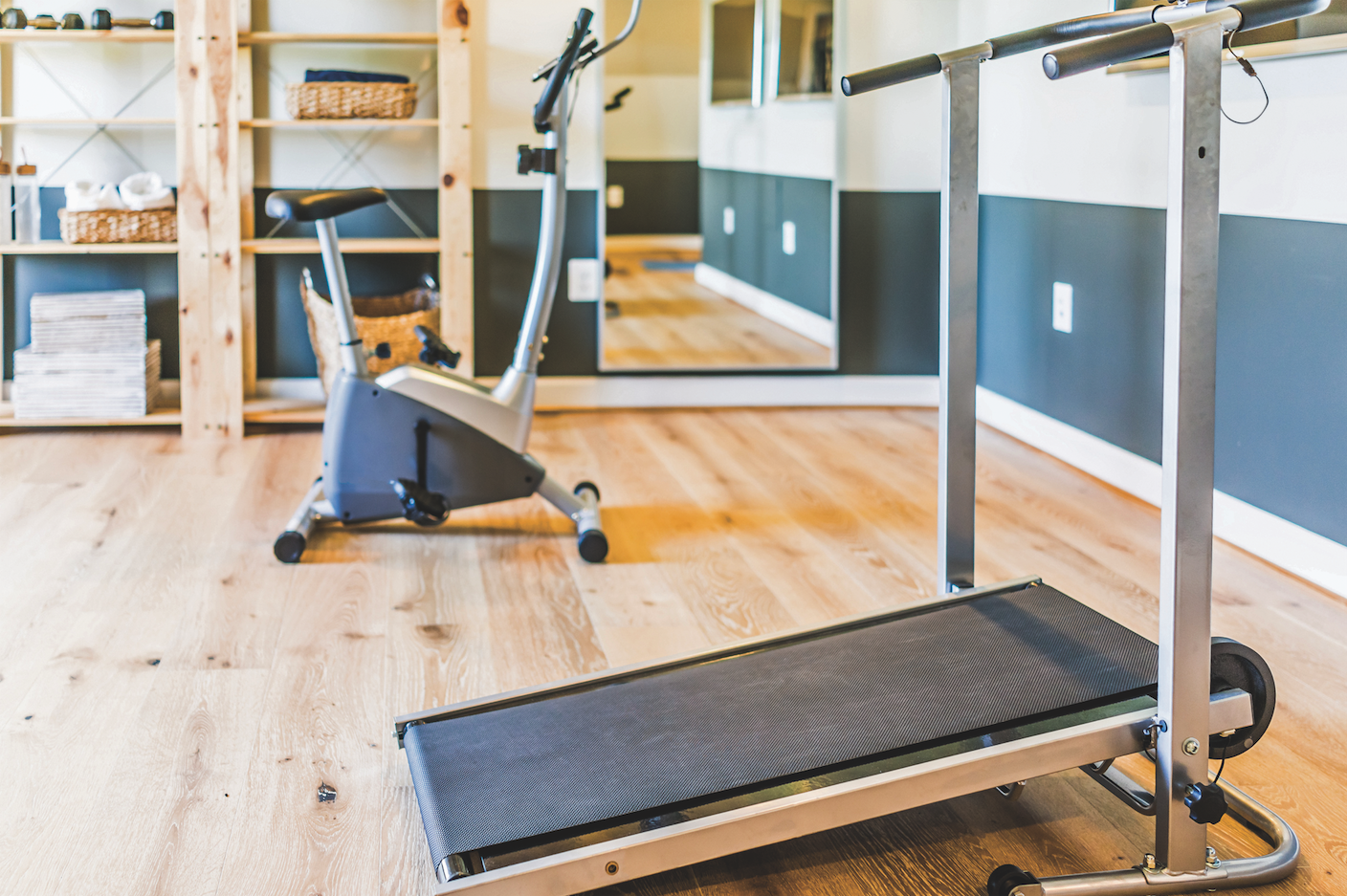
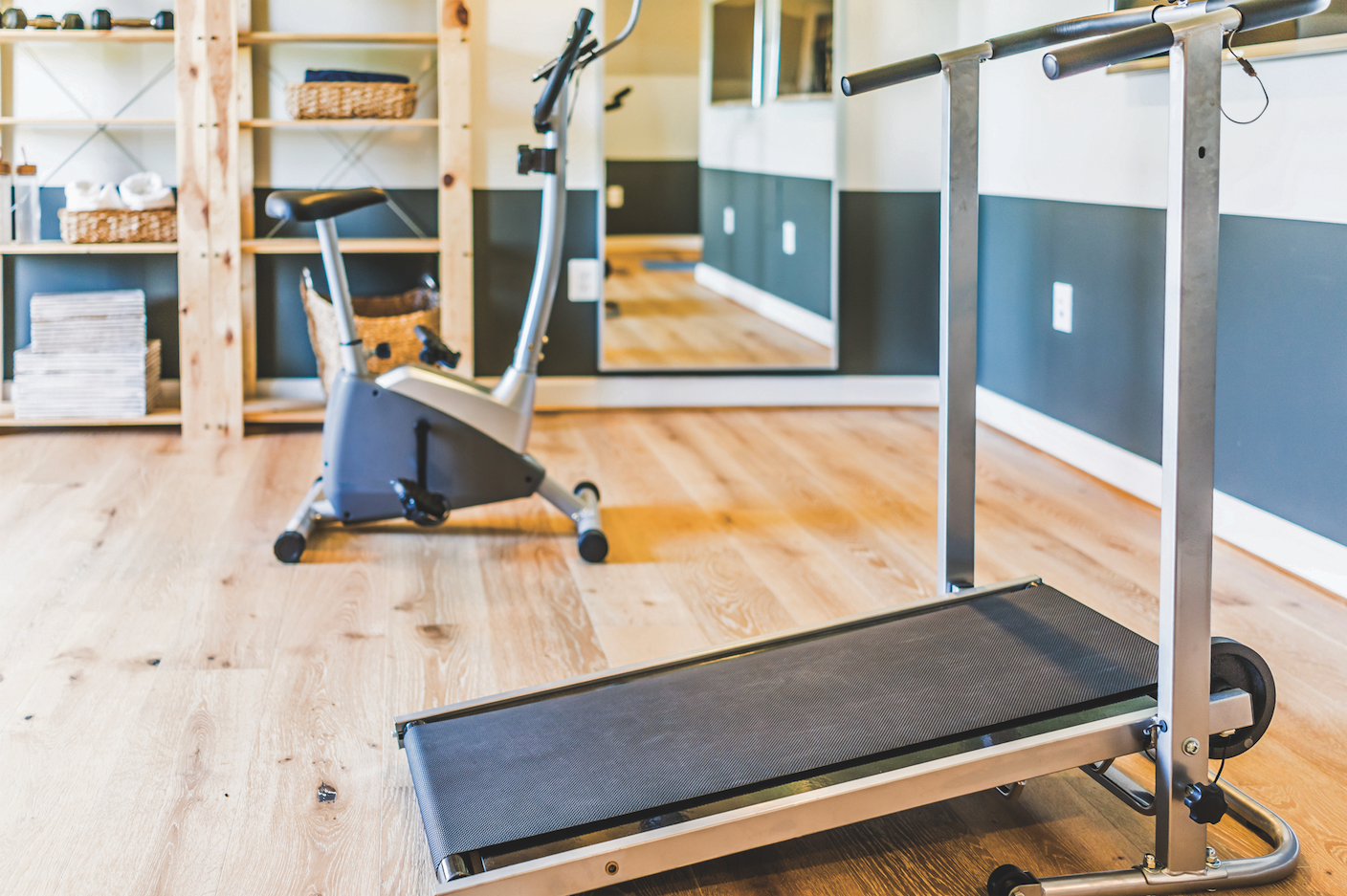
Keeping fit with the holidays approaching can be challenging. Months of back-to-back festive events leave you with less time, while facing an over-abundance of tempting food and cocktails. If you’ve ever considered putting together a home gym, now’s a great time to get started.
Home gyms have become increasingly popular in recent years, with nearly one-third of new and potential homebuyers saying that having a home exercise room is either essential or desirable, according to the National Association of Home Builders, a Washington D.C.-based industry trade group.
The benefits can be significant. You can purchase the exact equipment you want, save on gym fees, and maximize your ability to work out on your own schedule. If more than one member of your family works out, the potential for savings and convenience are even better.
Options are limitless. On one end of the spectrum, you can dedicate a room in your home as a workout space, giving it a professional gym feel by installing large mirrors and soft, rubber flooring. On the other end, you can just repurpose a small, unused alcove as a workout area.
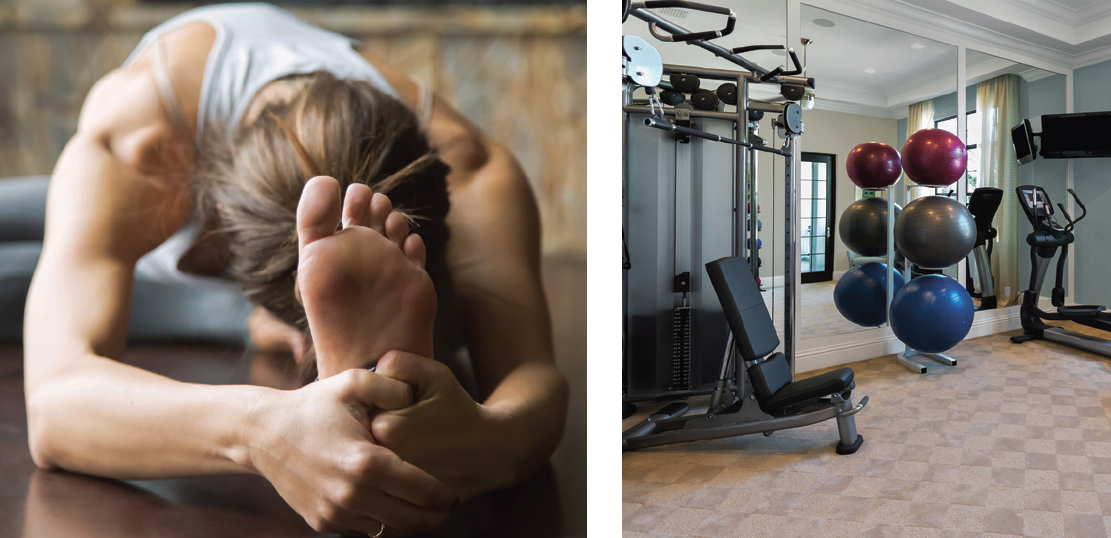
Hardcore gym enthusiasts can invest in professional-grade equipment, including heart-monitoring treadmills, full-size ellipticals, and bikes that have access to on-demand spin classes. Alternately, there are many types of smaller, collapsible equipment that mimic standard gym options. You can even have a gym without any bulky exercise equipment, and instead create a space for an in-house cardio room or a yoga studio.
Thinking it through
The kind of home gym you create will depend on three key factors: your workout style, available space and size of budget.
Are you dedicated to working out and accustomed to full-scale gym equipment, or are you someone who attends an occasional cardio class? Do you have a spare room, or are you trying to carve out an area? Do you have the budget to purchase expensive equipment, or are you trying to stretch your dollars?
Being honest with yourself about your workout style—and that of other members of your family—is a good way to begin. If you like the social aspect of working out at a gym, including group classes, a home gym might not be for you. On the other hand, if you just want the most convenient place to hit the treadmill for an hour a day, you might be better served by bypassing travel time and monthly fees and setting up shop at home.
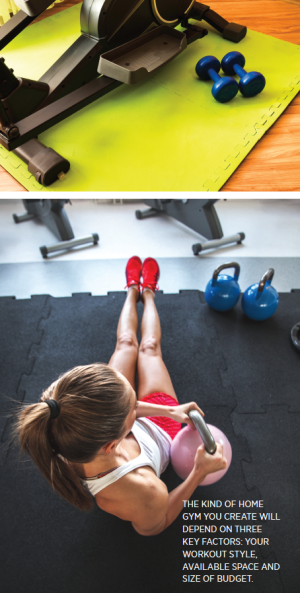 Likewise, think about what you really need in regard to equipment. If you have been working out at a gym for years, and prefer durable equipment with all the bells and whistles, ask yourself if you have the funds and the space to purchase and set up high-quality machines. On the flip side, if you’ve never really worked out steadily, ask yourself if you really need to gut a guest room and install a bank of cardio machines.
Likewise, think about what you really need in regard to equipment. If you have been working out at a gym for years, and prefer durable equipment with all the bells and whistles, ask yourself if you have the funds and the space to purchase and set up high-quality machines. On the flip side, if you’ve never really worked out steadily, ask yourself if you really need to gut a guest room and install a bank of cardio machines.
Assessing your space
Once you have an accurate sense of what you need and want, assess your available space. Some natural places to create a home gym are spare rooms, sunrooms, lofts, attics, basements and garages—with the latter three being either raw space or finished.
A spare room is often an ideal option, but use will depend on location. A ground floor room usually provides excellent space for ellipticals and treadmills, but if you have lots of kids and visitors around, it might be too noisy for a yoga studio. An upper floor space might work for equipment (provided you’re confident the floor can sustain the weight) but if that same room is next door to, or directly over, a bedroom, it might not be the best place for a Zumba studio.
Basements are often leveraged for home gyms, especially if they are finished. The floors can usually support heavy equipment, and you are somewhat insulated with regard to noise—both from hearing it and making it—so the space is often suitable for a variety of exercise preferences. An unfinished basement can also work, but be honest with yourself before you decide to use it. Is it dark and dingy? Will you really be enthusiastic about working out in that space? If yes, no worries. If not, think about other options, including investing in finishing the space prior to building out your gym, or even adding just a few upgrades.
Some simple ways to beautify your basement space include painting the walls a fresh color, and installing light fixtures or adding freestanding lights to make the space brighter. Soften the space by adding some cushioned flooring or an area rug. Get a TV for the space so that you can stream exercise classes or watch shows while you work out and feel less isolated. You can even keep a small stack of gym towels handy, and add a small dorm fridge loaded with pre-filled water bottles, so you don’t have to go upstairs to hydrate.
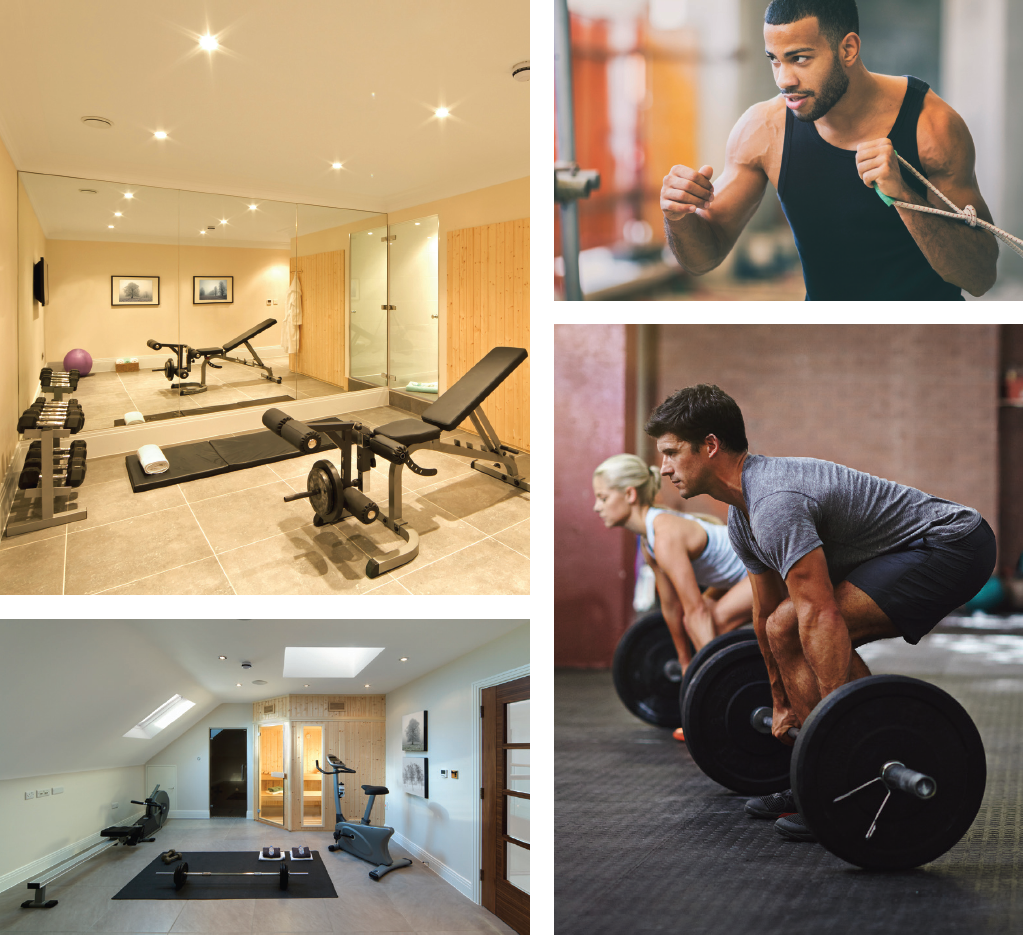
Garages, even if used primarily for cars, can also be great spaces. You can store a free-standing kicking bag in the corner and, after backing the car out and shutting the door for privacy, turn on some tunes and host your own kickboxing session. You can even have mechanical equipment in a garage, assuming you can cover it when not in use to protect it from dirt and dust. The downside: This space is somewhat dependent on seasonality, and can be steamy in summer and cold in winter, although large fans and space heaters can help offset temperature fluctuations.
If you are pressed for extra space, consider nooks and alcoves within your home, as well as rooms that might currently be dedicated to one use but could, if stretched, be enlisted for a different use. Open loft space at the top of the stairs, or a corner of a home office, bedroom, den or laundry room might suffice—if not for multiple machines, then at least for one that you will really use.
When choosing your workout space, give some thought to flooring. If you’ve just installed expensive hardwood floors, plan to purchase additional protective padding to prevent scratching from heavy equipment. (You can purchase clear protective covers, so the floors can still be seen, or you can put down padding and cover with a decorative area rug.) Or, choose a space with old carpeting, so damage is not as big of an issue. Carpeting will also muffle sound while wood will echo it. You can even buy soft rubber or foam flooring to mimic a gym floor—a great option for unfinished space like a basement, attic or garage.
Getting your gear
Equipment is entirely dependent on use and budget. You have countless choices based on how you plan to work out and how much you’re willing to spend. You can purchase much of the same heavy-duty equipment as chain gyms—such as treadmills, ellipticals, stationary bikes (both upright and recumbent), weightlifting systems, rowing machines, and stair-climbers.
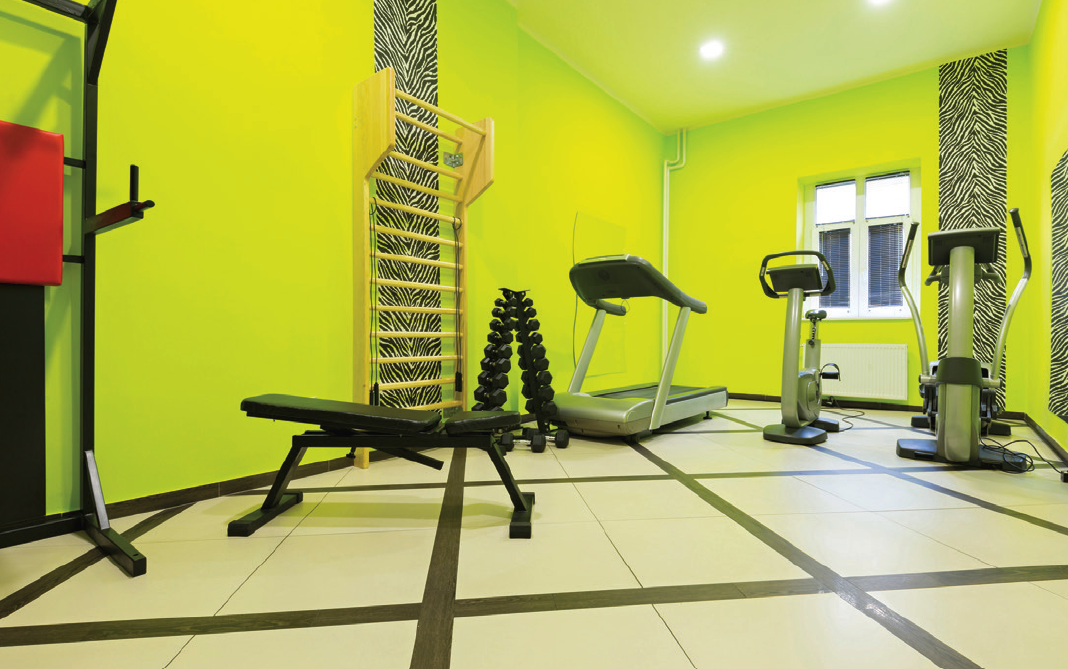
Some high-tech cycling options to investigate include Peloton, which streams live spin classes to your stationery bike, allowing you to have access to an instructor in your own home; and Zwift, which allows subscribers to ride and compete with other digital cyclists from around the globe in a virtual world, including racing on digital versions of championship courses! If access to electricity is an issue, such as in a garage, consider options like the Woodway Curve, a non-motorized treadmill favored by professional athletes and trainers.
Or, you can find less elaborate equipment, including collapsible treadmills that are lighter and portable, and compact ellipticals. Just check the usage guidelines to ensure they are suitable for the size and weight of the users. A lightweight bike might be fine for someone who is five foot three and 120 pounds, but unstable for someone who is six feet tall and 220 pounds.
For punching and kicking, select gear closer to what you might find in an old-school boxing or kickboxing gym, such as hanging bags. For areas where flooring isn’t an issue, like basements and garages, you can get freestanding bags where you fill the base with water or sand to stabilize. Terrific low-tech, old-school gear can include jump ropes, tension bands, medicine balls, and even hula hoops, which have made a recent comeback in popularity. Some of the latest low-tech trends include Bosu balancing balls and kettlebells, which help strengthen your core. To ensure a varied workout, both for yourself and other family members who might utilize the gym, you should have a selection of options.

You can even replicate your favorite gym workout. With a Wii and a TV set, you can do cardio classes like Zumba at home. Or you can build your own CrossFit studio by purchasing individual elements of the workout.
If you aren’t ready to fill a whole room with pricey options, then just start small. See how you like using a collapsible piece of equipment stashed in a corner of an unused room, and if all goes well, eventually plan a dedicated space with higher-end equipment. Home gyms, like any other room, can be flexible, adaptable and can grow with use. But regardless of your space, don’t forget to add a few fun finishing touches. Whether it’s ensuring access to a TV set, setting up nice lighting, or having gym amenities handy like water and towels, ambience and convenience will keep you coming back.
Creating a home gym now is a great investment in your long-term health and well-being. You’ll be poised to maximize your workout, eliminate gym fees, and stay in shape regardless of the obstacles and temptation that come your way. And if you’re especially good, you can even ask Santa for new equipment.
Current Issue, Exercise, Home Gym, Interior Design, Keeping Fit, Self Improvement, Workout Space






